Michael Guyette became president and CEO of VSP Global, based in Rancho Cordova, in 2018. Guyette previously worked at Blue Cross and Blue Shield of Minnesota and Florida, Aetna, and Independence Blue Cross. He now oversees the nation’s only not-for-profit vision benefits company, which provides eye care insurance to about 90 million people worldwide. The doctor-governed organization has a network of nearly 40,000 private practice eye doctors, and includes eyewear, customized lenses, ophthalmic technology and more than 700 Visionworks optical retail stores. Comstock’s spoke to Guyette about leading the 65-year-old organization.
You joined VSP Global in 2018 after about 25 years in the health care industry. What attracted you to this position?
Basically, two things. One, the purpose-driven value system of the organization. The second one is around the connection to health care. First of all, we cover almost 90 million people. We’re not-for-profit. We are connected not just to the U.S. but throughout the world, and it’s all about providing quality eye care and providing access, and that’s been important to me throughout my entire health care career. I’ve been in health care for nearly 30 years, working for other nonprofit organizations like Blue Cross plans in Florida, the Philadelphia area and then, most recently, in Minnesota. The fact that we as a company can have an impact on so many people on a national basis and, frankly, even to some degree, a multinational basis and help people get access to eye care and connect it back to health care was so critical to me when I joined VSP.
The importance of that goes back to really my early childhood. … My dad was a union worker. He worked as a shipfitter in a shipyard, basically laying pipe and welding, and my mom was a stay-at-home mom with five kids. She was sick quite a bit when I was growing up. I got to see the interaction with the health care system early on, and for her and for us as a family trying to decide, well, (if) you go to the doctor, how much is it gonna cost? How do we get access? …
When I was like in first grade, my mom finally took me in to see the eye doctor because I wasn’t doing so great in school or couldn’t catch a ball or whatever the issue seemed to be, and I had such poor vision as a kid. … I couldn’t even read the letters on a stop sign. I can remember getting my first pair of glasses … and how it just changed how I saw the world. Here I am working for a company where I get to do that for literally millions of people — I don’t do it, the people who work here do it — and I get to help lead an organization that has a positive impact on helping people see. … (Additionally), VSP has helped over 3 million people get access to no-cost eyecare and eyewear … from our charitable arm with the Eyes of Hope program.
How has your industry changed in recent years, and how have you helped VSP adapt to or lead the way with this change?
I inherited a vertically integrated organization. Most people see it as just an insurance company, but we also have a company that makes frames, that makes lenses for those glasses, a software company (Eyefinity) that provides electronic health records and practice-management tools for doctors. We had a small retail arm, online retail, and we were just doing some on-site clinics for some of our large employers. My job was to really focus on two areas. One, make sure we had a good strategy going forward and get the whole organization to rally around it. The second one was about executing quickly.
The reason for quick execution was because of some key areas of change in our industry. … (There is) tons of market consolidation, whether it’s insurance companies consolidating, frame companies consolidating, doctor practices (consolidating). Most eye doctors are independent, private practice doctors, and they’re being consolidated by private equity. We needed to make sure we were going to be part of that solution, helping the network, helping the doctors and helping the industry through some of this consolidation.
What we’re seeing is the consolidation is happening mainly through private equity groups picking up these small individual practices and trying to maximize profits and create efficiencies, but I think it’s at the risk of providing, to some degree, quality eye care and access back to people. Our purpose, what drives this company day in and day out, is to make sure people have access to quality care. I get worried about rapid consolidation and maximizing profits. It impacts what people ultimately get delivered to them.
I get worried about rapid consolidation and maximizing profits. It impacts what people ultimately get delivered to them.
So one of the areas we focused on quickly was an alternative to private equity. Our private practice doctors were asking VSP to come up with some kind of a solution, and we started a part of our company called VSP Ventures … in late 2019, and since then, we’ve acquired 20 practices so far; 11 of them are here in California. The doctors really love to get connected to Ventures because we preserve that doctor’s legacy. We leave their name on the door. Their patients still come in and get a similar experience. We’re not just driven strictly by efficiencies and, ultimately, dollars like some of the other consolidators … out there. We also are adding additional tools and technology to help those practices.
The second change in our industry is around consumer expectations. … Consumers want (access) now. They want customization. They want a quicker turnaround time. They’re looking for better connections back to what their needs are, and VSP, with the data we have available to us, we can understand where consumer preferences are. We can help those doctors and practices identify what consumers truly want. …
Three out of four consumers — we do tons of research on this — prefer to see private practice doctors. But still 20 percent of them prefer a retail setting, which is one of the reasons we acquired Visionworks last year (in) October. (This was) our largest acquisition for this company ever — 700 retail locations around the country — and created a differentiator for us in our network because we can now deliver a consistent retail experience and then, through our programs working with private practice doctors, connect our members back to private practice doctors, if that’s what they’re looking for.
The third and last major area of focus for us as a company, with all the changes happening, is around technology and technology disruptors. … Especially with what’s happening with (COVID-19), telehealth is accelerating quickly. So how do we connect our private practice doctors to deliver telehealth capabilities for their patients? We have partnered with a number of companies to help do that.
We are looking at our customization of glasses and lenses and even personalized benefits for their insurance. So how do people get the value out of their insurance plans in times when there seems to just be constant change from a technology perspective? We had The Shop … which was our innovation center in Midtown (Sacramento). We’ve expanded that now … (with) the Global Innovation Center … in The Cannery office park. (It) has four key tracks that they’re focusing on, and it’s really exciting to see how we get to impact vision care going forward with some of our innovation that we can implement, not just here at VSP, but across the industry.
Can you tell me more about those four key tracks?
The first key track is around the digital supply chain (and) how fast or how disconnected the supply chain can be for people to get their eyewear. How do we work with doctors to help create this digital supply chain where we can replenish frames, and we can replenish their lenses and get quicker service back to those members? Again, consumers want things now, and they want it customized for them. Eyefinity, our software company, (and) working with doctors’ practices, helps us do that.
The second (track) is around being health-focused and looking at alternative delivery care models. This is where we get into telemedicine a little bit, also how we connect with companies like Livongo (which merged with Teladoc Health in November) and help with connecting eye care back to health care. Some people are not aware … that eye care could actually be an early detector of critical diseases, like diabetes and high-blood pressure and, obviously, other eye diseases, like glaucoma and cataracts. (By) partnering and working with Livongo, we can use our data, and they can use their data, (and) we can share back and forth just for the possibility of identifying prediabetics or diabetics. …
The third (track) is around personalized vision and using the data we have available to us — we have hundreds of millions of claims records over the years — that we can (use to) get an idea of what consumers want: What frame type, size, shape, what kind of lenses do people need? How do we look at new innovations and bring those forward, whether it’s different coatings for antireflectiveness or just new capabilities out there? So using data to help us maximize the value back to VSP clients and our doctors and our members.
The (fourth) track that we’ve been in for quite a while now is around smart glasses. We had a product called Level that we launched a number of years ago, and now we’re taking a look at partnering and working with other companies around providing smart glasses.
Tell me about VSP’s response to COVID-19.
As early as February, we started taking a very conservative approach to limiting travel and adding personal safety guidelines for employees. … That week in March (when Gov. Gavin Newsom issued a stay-at-home order), we transitioned 95 percent of our office employees to remote in less than five days, and we did this with no disruption to our clients, our members or doctors. …
We shut down our Visionworks stores. Let me tell you, that was painful to think about 700 retail locations, and we’re going to shut that down with no revenue and still have costs. … But we knew we had to put our employees’ safety first, make sure that we had personal protection equipment, safety protocols in place. Honestly, as financially difficult as it was for the company, it was a no-brainer to make sure our employees were going to be safe through COVID.
We wanted to make sure that we’re supporting our clients, our members. … We expanded our access to essential and emergency medical eye care insurance services for members and dependents for all of our members. This is something that normally companies would add onto their policies, and we just expanded (it) across the board. … What we saw is that people were (having) limited access getting into the emergency room, and that eye doctors had an opportunity to provide some of that essential eye care … (for) things like eye trauma, sudden changes to the vision, conjunctivitis.
Let me give you a real-life example. … There is a mother that called in; she noticed her young daughter was rubbing her eye uncontrollably for days. This is during the early stages of the pandemic, and she wasn’t going to get into the (emergency room) because during those days, the ER was turning people away. She was able to get care from her local VSP network doctor. The doctor found this small speck of metal in the little girl’s eye and was able to remove it. People think you have to go to the ER for that, and our eye doctors had the capability and the training and the expertise to do this.
(Our doctors aren’t) employees of VSP, but they are part of our network, and we were founded by doctors, and that’s our roots, and part of the purpose of this organization is how do we support the medical community, support the doctors in our network? … We’ve got all these private practice doctors around the country, 40,000 around the country, saying, “We need help with PPE.” We pivoted our manufacturing. We made shields and got those deployed to our doctors as quickly as possible, free of charge. …
We also used our procurement — because you can imagine the power of VSP with 15,000 employees, 700 retail locations, manufacturing facilities all over the world — and we quickly were able to make sure that we used our procurement facilities to then connect those doctors … to get PPE in the best possible way. We couldn’t manufacture all of that, but we were using our resources to get those connected back to the doctors.
We established a grant program for our doctors, and we’re providing them with cash payments of up to $10,000 to help offset expenses and financial hardships caused by the pandemic. … We know their practice patterns changed. We know the number of patients they’re seeing has changed. We know their protocols have changed. We know the ways they interact with their members have changed, and the cost of their materials may have changed. … They do not need to provide us with any reimbursement. This isn’t a loan. This is just a way to try to give back.
We had to make some tough choices (in responding to the pandemic). … We said, look, we’re impacting people’s lives here. … We did have to furlough people. We did have to relieve our temporary workers and consultants. But we went after program costs and hard costs, cut travel and stuff like that first. Ultimately, we did have to have a reduction in force for some people. But, again, we did it with kindness and respect and gave them the best possible career transition … and we’ve been able to even hire some of these people back in the last few months, given the fact that our business has ticked back up.
You’re involved with the Greater Sacramento Economic Council. How can the Capital Region drive innovation and economic development?
I’ll be chair in July of 2021. … One of the reasons we’re headquartered here is we can attract and retain great talent here. … We’re seeing that talent from the Bay Area is moving here, which is awesome … and you think about the diversity here and how dynamic we are as a region, the operating costs for businesses compared to other parts of California. Our quality of life is really great. … When you think about the innovation that’s being sparked here because of companies like VSP, because of UC Davis or Sutter (Health) and Dignity (Health), you’re seeing this focus on health care grown here in the region — (about) 280,000 jobs are connected to health care and life sciences. …
I’m excited about Aggie Square. I’m excited about what we’re doing with the California Mobility Center. … One of the great programs that GSEC and a lot of the community leaders have jumped on is this digital upskilling initiative. It’s a way of upskilling and retraining disadvantaged and displaced workers from a digital capabilities perspective. … It’s really about inclusion and equity and building on (the Sacramento region’s) economic resiliency.
–
Stay up to date on business in the Capital Region: Subscribe to the Comstock’s newsletter today.
Recommended For You
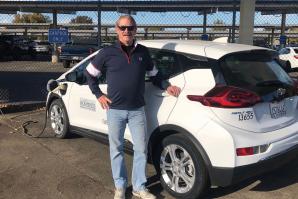
Fleet of the Future
The City of Sacramento moves its municipal vehicles toward sustainability
Sacramento is working to turn its fleet into a model of municipal sustainability with electric vehicles, a software-and-hardware suite to monitor efficiency, and more.
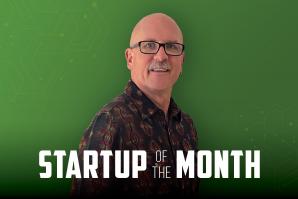
Startup of the Month: Unfold
Breeding seeds for vertical farms
The future of vertical farming begins on the genetic level. That’s the philosophy of Unfold, a Sacramento-based startup focused on innovating fruit and vegetable seeds to better serve indoor growing facilities.
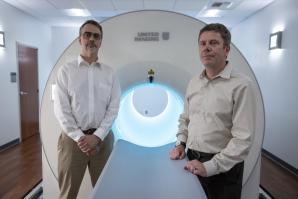
The Image of Health
Co-inventor Simon Cherry on how the world’s first total-body PET scanner could significantly change disease diagnosis
Comstock’s spoke with Cherry about the groundbreaking work that led UC Davis to name him and co-inventor Ramsey Badawi among the recipients of the 2020 Chancellor’s Innovation Awards.
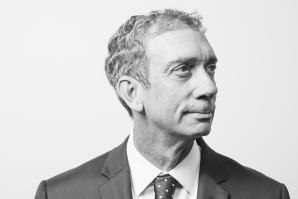
Pathway to the Future
Los Rios Community College District Chancellor Brian King on new opportunities — and new funding
Comstock’s recently spoke with King (who is also a member of our editorial advisory board) about challenges faced by community college students and how Los Rios can help train the workforce of the future.



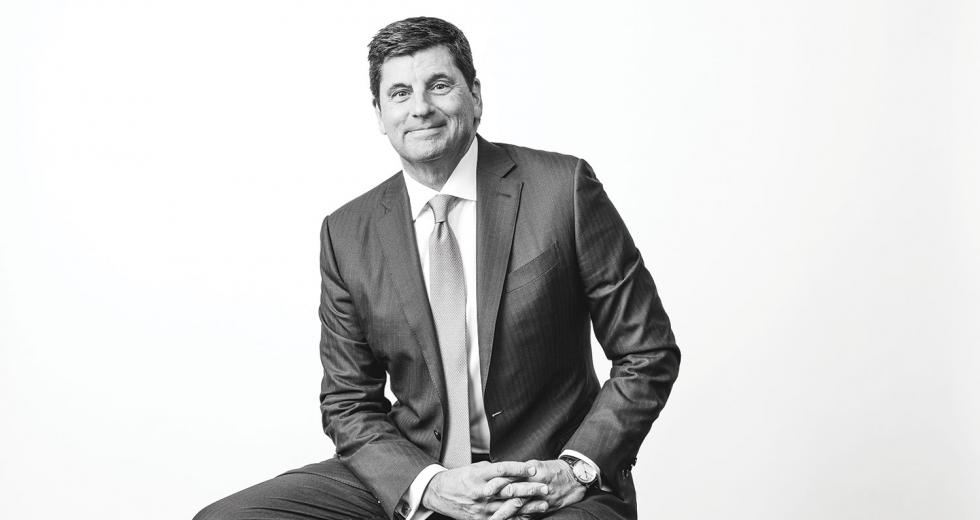
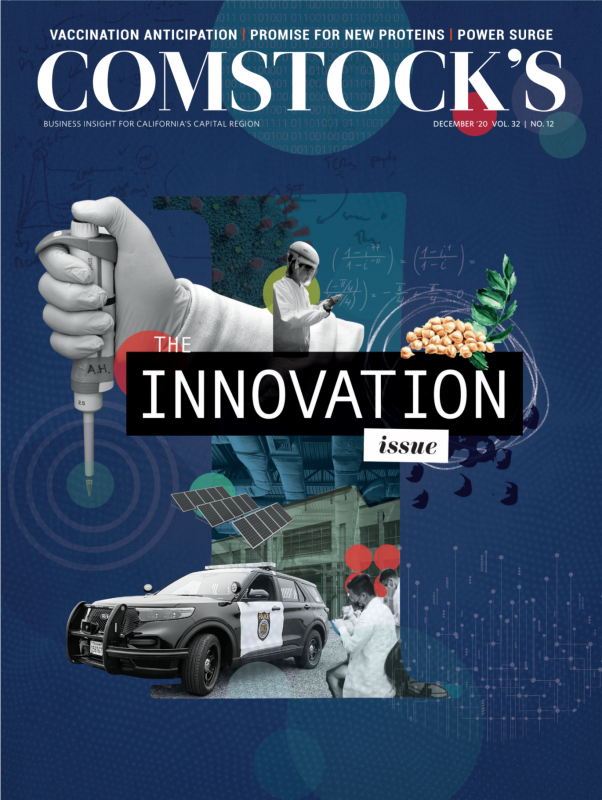
Comments
I’m so proud to work for VSP! Mike, thank you for your great leadership, especially during this challenging year. It’s amazing to look back at everything that we’ve been able to accomplish this year by banning together (remotely) to meet the needs of our doctors, members, and clients. I also appreciate everything VSP has done to take care of the employees this year, including implementing such a seamless transition to have almost everyone work remotely so quickly and so early in the pandemic to keep everyone safe. VSP has so many wonderful employees and it’s be great to see us adapt and find new ways to maintain our wonderful culture even while working remotely.